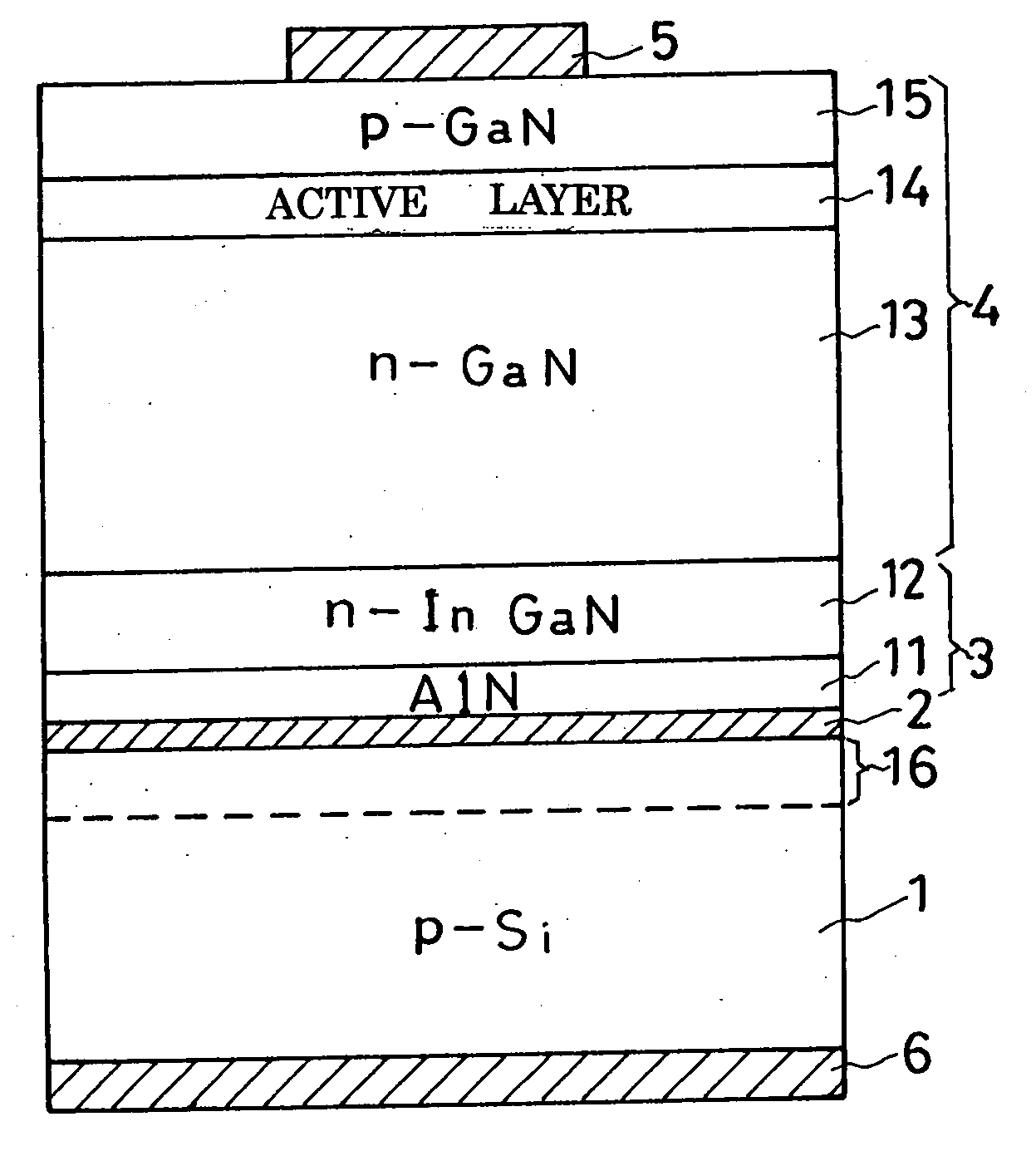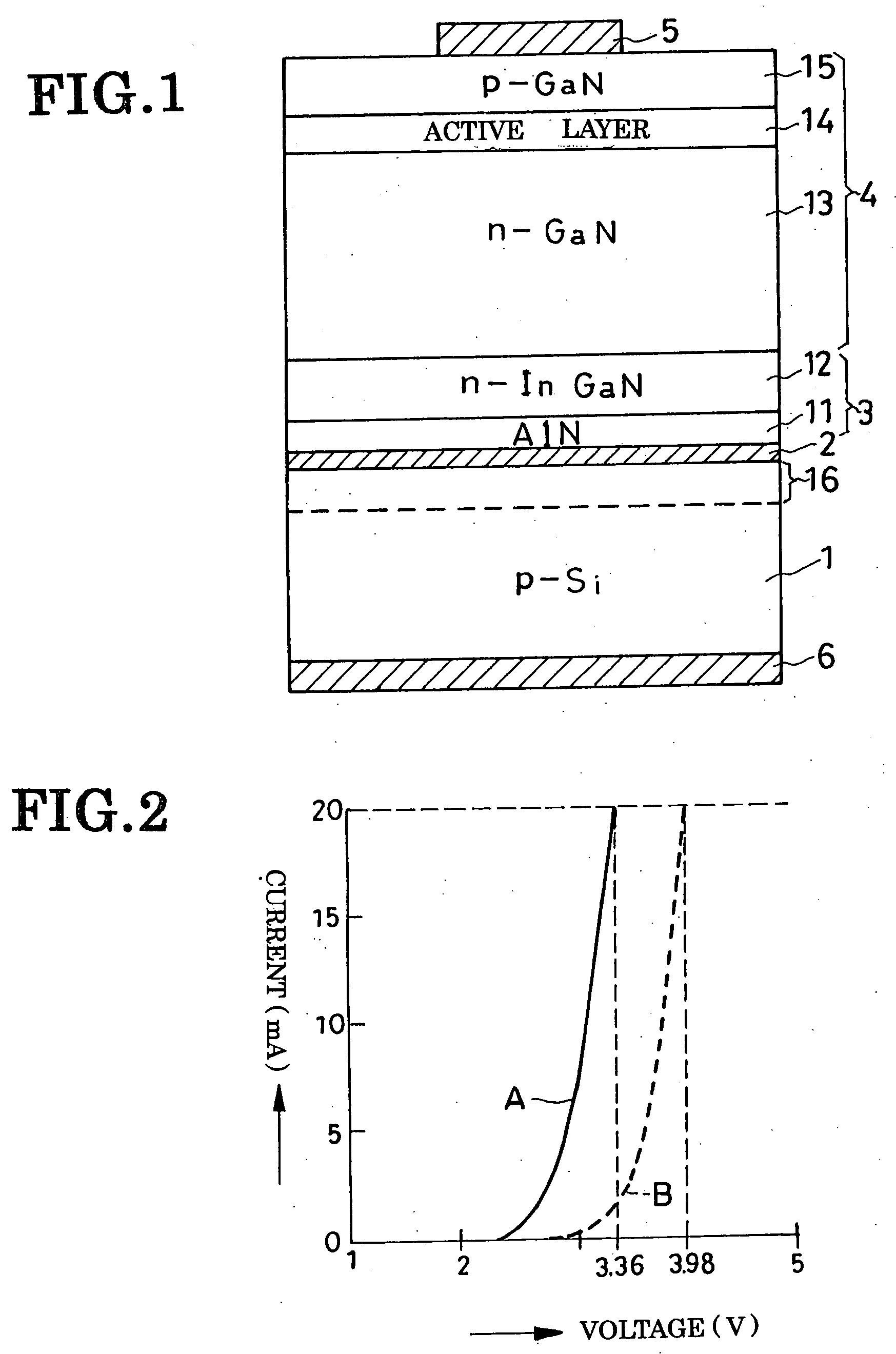Nitride-based semiconductor device and method of fabrication
a technology of nitride and semiconductors, applied in the direction of semiconductor devices, basic electric elements, electrical equipment, etc., can solve the problems of increasing power loss, generating more heat, and reducing the efficiency of light emission of nitride semiconductors on n-type silicon substrates, so as to achieve less voltage and reduce voltage drop
- Summary
- Abstract
- Description
- Claims
- Application Information
AI Technical Summary
Benefits of technology
Problems solved by technology
Method used
Image
Examples
embodiment
of FIG. 4
[0069] The LED shown in FIG. 4 by way of another preferred embodiment of the invention is akin to the FIG. 1 embodiment except for a modified buffer region 3a. The modification resides in a multilayered buffer subregion 20 interposed between the buffer layer 12 and the n-type nitride semiconductor layer 13 of the main semiconductor region 4. The multilayered buffer subregion 20 is an alternation of a plurality or multiplicity of first buffer sublayers 21 and a plurality or multiplicity of second buffer sublayers 22. The first buffer sublayers 21 are made from a nitride semiconductor containing a prescribed proportion of aluminum, and the second buffer sublayers 22 from a nitride semiconductor that either does not contain aluminum or does contain aluminum in a less proportion than do the first buffer sublayers 21.
[0070] The aluminum-containing nitride semiconductor materials adoptable for the first buffer sublayers 21 are generally defined as:
AlxMyGa1-x-yN
where M is at l...
PUM
 Login to View More
Login to View More Abstract
Description
Claims
Application Information
 Login to View More
Login to View More - R&D
- Intellectual Property
- Life Sciences
- Materials
- Tech Scout
- Unparalleled Data Quality
- Higher Quality Content
- 60% Fewer Hallucinations
Browse by: Latest US Patents, China's latest patents, Technical Efficacy Thesaurus, Application Domain, Technology Topic, Popular Technical Reports.
© 2025 PatSnap. All rights reserved.Legal|Privacy policy|Modern Slavery Act Transparency Statement|Sitemap|About US| Contact US: help@patsnap.com



